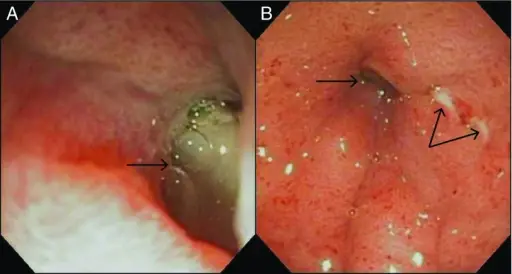Pyloric stenosis is an uncommon condition in infants that blocks food from entering the small intestine. Normally, a muscular valve pylorus between the stomach and small intestine holds food in the stomach until it is ready for the next stage in the digestive process.
What is the Pathology of Pyloric Stenosis?
The pathology of pyloric stenosis is:
-Etiology: The cause of pyloric stenosis is: The cause of pyloric stenosis is unclear. Risk factors in babies include birth by cesarean section, preterm birth, bottle feeding, and being first born.
-Genes involved: NOS1 gene.
-Pathogenesis: The sequence of events that lead to pyloric stenosis are: hypertrophy and hyperplasia of both the circular and longitudinal muscular layers of the pylorus. This thickening leads to the narrowing of the lumen of the gastric antrum. The pyloric canal becomes lengthened. The muscles of the pylorus become thickened.
-Histology: The histology associated with pyloric stenosis shows muscles of the pylorus are abnormally thickened.
How does Pyloric Stenosis Present?
Patients with pyloric stenosis typically four times more common in males present at age range between 2 and 8 weeks of age, but can occur anytime from birth to 6 months. The symptoms, features, and clinical findings associated with pyloric stenosis include vomiting after feeding, lingering hunger, stomach contractions, dehydration, and lack in weight gain.
How is Pyloric Stenosis Diagnosed?
Pyloric stenosis is diagnosed by physical exam, ultrasound, and barium swallow. Blood tests for electrolytes may be helpful.
How is Pyloric Stenosis Treated?
Pyloric stenosis is treated by adequate hydration, electrolyte replacement, and pyloromyotomy.
What is the Prognosis of Pyloric Stenosis?
The prognosis of pyloric stenosis is excellent.



